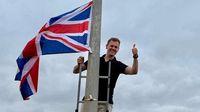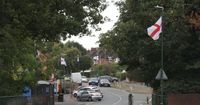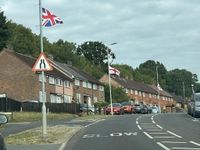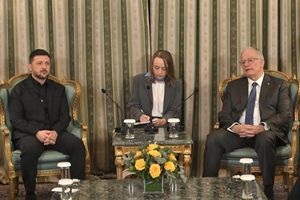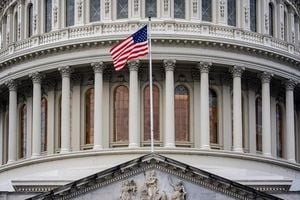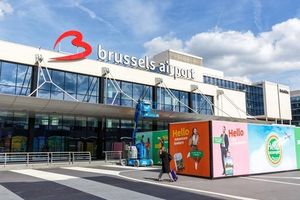Driving through the southwest of Birmingham in August 2025, one can’t help but notice a striking change: for more than a mile, nearly every lamppost is adorned with either a St George’s Cross or a Union Jack flag. This vivid display of national symbols, which began in the Weoley Castle district in mid-July, has rapidly spread to neighbouring areas and far beyond—reaching cities as varied as Worcester, Bradford, Greater Manchester, Newcastle, Norwich, and even South Oxhey near Watford. These flags, fluttering above the streets, have become a flashpoint for debate about patriotism, identity, and the meaning of national pride in modern Britain.
The origins of this flag-raising phenomenon trace back to an incident in Rugby, where a 12-year-old girl was prevented from making a speech about being British at her school’s Culture Celebration Day because she wore a Union Jack-themed dress. The school later issued an “unreserved apology” for the incident, but the story quickly gathered momentum online, resonating with many who felt it reflected wider issues about British identity and expression. According to the BBC, it was this event that inspired the first flags to be raised in Weoley Castle’s square, setting off a chain reaction that would soon sweep across the country.
At the heart of the movement is a group known as the Weoley Warriors. Initially formed by three men, the group now boasts several dozen members, a private Facebook group with 1,600 participants, and a crowdfunding campaign that has raised nearly £14,000—funds earmarked strictly for flags, poles, and cable ties. On their crowdfunding page, the Weoley Warriors describe themselves as “a group of proud English men with a common goal to show Birmingham and the rest of the country how proud we are of our history, freedoms and achievements, giving hope to local communities that all isn’t lost and they are not alone.” Their campaign, dubbed “Operation Raise the Colours,” has become a rallying cry on social media, with photos and videos of flag-lined streets shared widely under the hashtag #operationraisethecolours.
But the Weoley Warriors are not alone. A similarly named group, Operation Raise the Colours, has also encouraged flag displays and claims responsibility for supplying flags to areas such as Wolverhampton, West Bromwich, and Staffordshire. According to The Times and anti-racism group Hope Not Hate, Operation Raise the Colours was co-founded by Andrew Currien (also known as Andy Saxon), who has alleged links to far-right organisations such as the English Defence League and Britain First. The group, however, denies any far-right affiliation. The BBC notes that the campaign has even received donations from Britain First, further fueling controversy and suspicion about its motives.
The flag displays have provoked a range of reactions. Many local residents in Weoley Castle and other towns voice support for the flags, with some seeing them as symbols of patriotism, civic pride, and unity. “We want to spread love, unity and patriotism,” two men told the BBC as they hoisted another flag, though they declined to be filmed or interviewed further. Sarah Milne, a local who knows the original members of the Weoley Warriors, argues the initiative is an attempt “to take the flag back from the racists” and to restore a sense of national pride. She believes it’s part of a broader reaction to public dissatisfaction: “Everybody’s so upset with the way the country’s being run, the way we’re being treated.”
Yet for others, the proliferation of flags is less uplifting. In Kings Heath, a suburb where a roundabout was vandalised with a St George’s Cross, one resident said, “It’s not patriotic, it just feels like an excuse for xenophobia.” Critics, including anti-racism groups like Hope Not Hate, warn that the campaign risks alienating minority communities and could be exploited by far-right groups. Councils in various regions have responded by removing flags, citing health and safety concerns—especially the risk of distraction to motorists—and lack of proper permission. The debate has become particularly heated in Birmingham, where the Labour-run city council has been accused of selectively taking down St George’s and Union Jack flags while leaving up Palestinian flags, though the council insists only 200 flags have been removed since January and none since August 1.
Political leaders have weighed in from across the spectrum. Conservative leader Kemi Badenoch described the removal of flags by some councils as “shameful” and accused them of enforcing rules “selectively.” In a column for the Daily Mail, she argued that such displays should be “welcomed” rather than treated as acts of rebellion. Meanwhile, Greater Manchester Mayor Andy Burnham expressed concern about the contentious nature of flag displays, especially the St George’s Cross, telling BBC Radio Manchester, “Flags are contentious… especially the flag of St George. I don’t think you need to start going out painting your community, you can obviously display a flag if that’s your choice but I don’t know, I do wonder about the times we’re living in. It’s like people are seeking confrontation.”
Others, like West Midlands Labour Mayor Richard Parker, have taken a more supportive stance: “I’ve seen them, I agree that they are uplifting all of us… displays of patriotism are something I support, so that’s my position and I think that is increasingly the position of the councils in the regions and politicians from all sides.” Dorset council leader Nick Ireland, a Liberal Democrat, offered a different perspective, warning that the sudden appearance of St George’s flags was “intimidating” for some residents and that it was “naive” to suggest the symbols had not been “hijacked” by far-right groups.
The controversy is not just political; it’s also deeply social. Sociologist and author Ellis Cashmore told the BBC that those displaying flags likely have varied motivations, but many share a sense of being “left behind or overlooked.” He explains, “If people reach the conclusion that they’re being either silenced or ignored, they want to do something about it. Of course they don’t have the means to make a formal protest, so what do they do? They start sticking out these flags, waving them… They want people to pay attention to them.”
Indeed, the flag displays have coincided with a period of heightened political tension in the UK, particularly around national identity, immigration, and the perceived marginalisation of certain communities. Protests outside hotels housing asylum seekers, where Union Jack and St George’s flags have featured prominently, underscore the ways in which symbols can be repurposed for divergent—and sometimes divisive—causes. The police, too, have become involved, investigating incidents of vandalism such as the spray-painting of roundabouts in Bromsgrove and the West Midlands.
As August draws to a close, it remains unclear whether these flag displays will become a permanent fixture on British streets, as is common in some American neighbourhoods, or whether they will fade as quickly as they appeared. For now, the flags continue to flutter, prompting both pride and unease, and sparking a national conversation about who gets to define what it means to be British in 2025.
